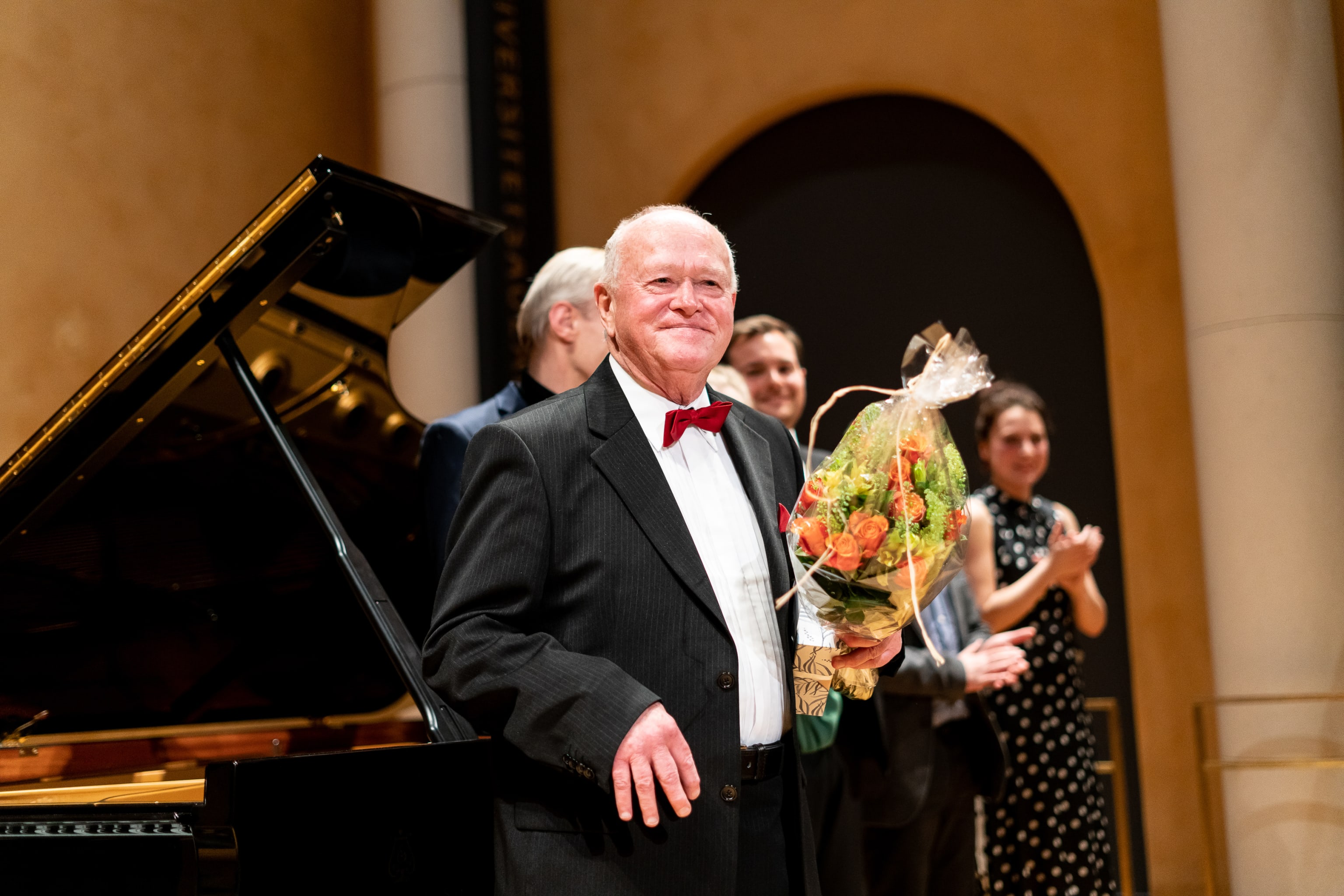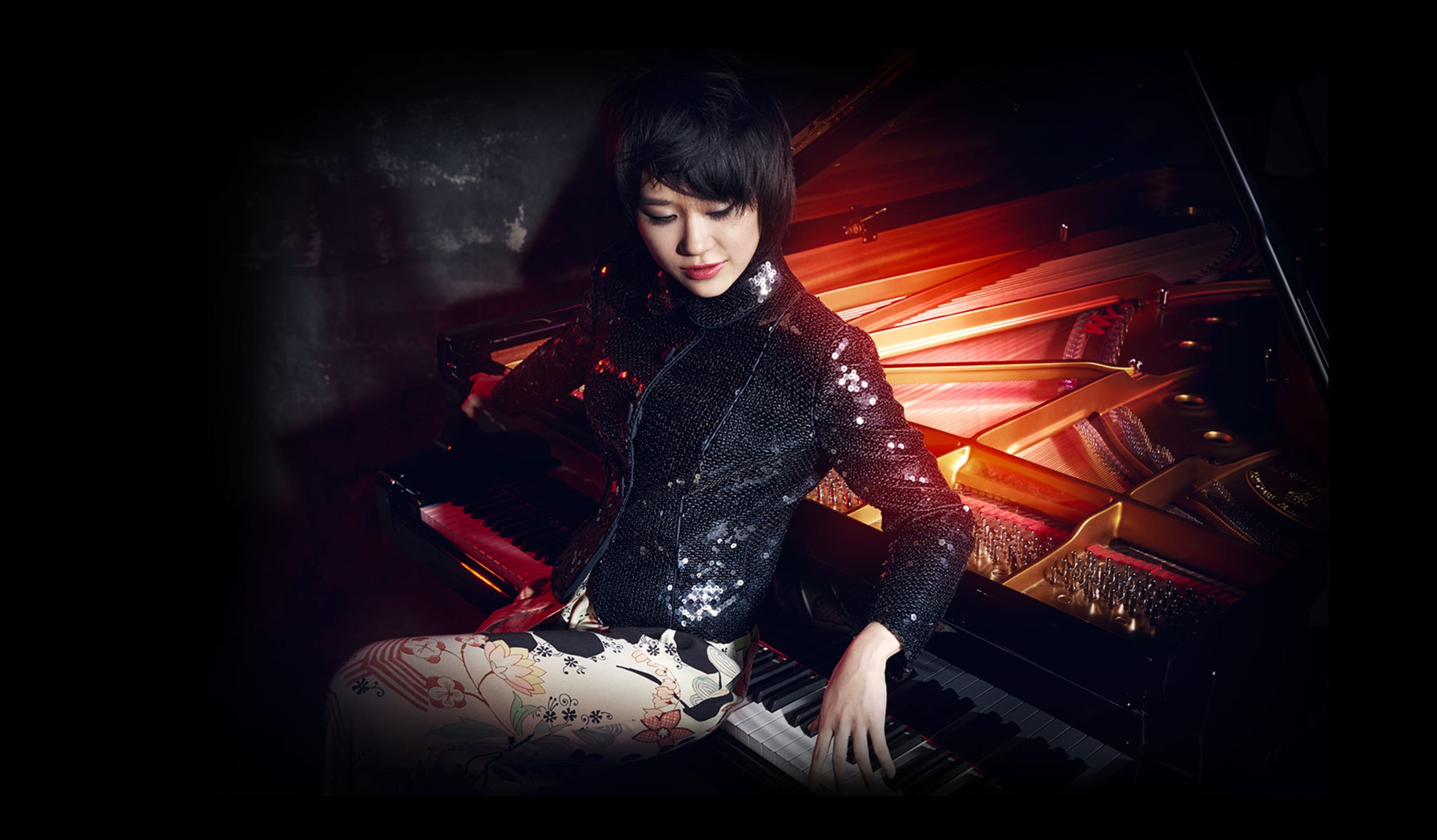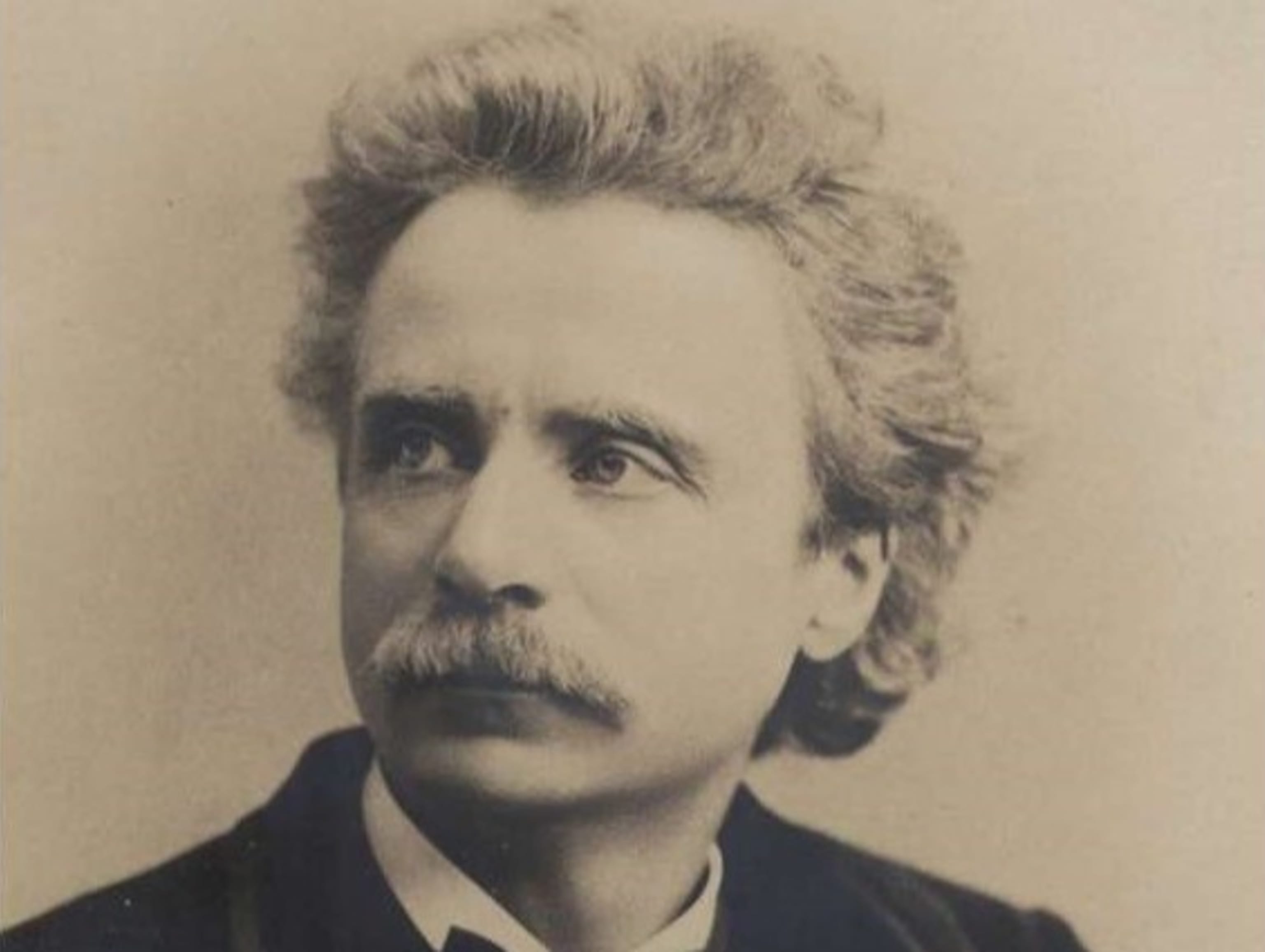Stormy ending
- Home
- Festival
- 2021
- Articles
- Stormy Ending
- By:
By: Ketil Mosnes,
May 12, 2021
40 years later, Arne Nordheim and Glen Tetley's classic takes over the Grieg Hall.
The 2021 Bergen International Festival will close with a performance of The Tempest. The performance – which is based on William Shakespeare's play with the same name – was created during a collaboration between the Norwegian composer Arne Nordheim and the American choreographer Glen Tetley in the late 1970s. The premiere took place in Germany in 1979 while the Bergen International Festival hosted the first Norwegian performance in 1981. Since then The Tempest has embarked on a critically acclaimed journey around the world.
The ballet’s music strengthened Arne Nordheim’s international recognition, and today many consider The Tempest one of his greatest works. The piece's ensemble consisted of two singers, an orchestra and audiotape, and the music has since been recorded on several occasions. Nordheim himself stated the following about the play: «For months, years, I devoted myself to Shakespeare’s The Tempest, read it again and again in many countries and cities and in every season of the year, through all changes in weather and mood. I have frequently read it alone, filled with despair, then studied it mathematically together with Glen Tetley.»
Nordheim's statement was found in the archives of The Norwegian Opera & Ballet, as was this statement from Glen Tetley:«Arne Nordheim and myself began our conversations in Italy. I considered this a lucky sign, because The Tempest’s background is very Italian. It was the first month of the year, and every afternoon Arne walked around the mountain to my house. At that time of the day, the silence highlights the church bells and all the bird and animal sounds in the forest. The fog rises: mountains become islands, valleys become seas, the city disappears into thin air. The atmosphere of The Tempest is magical and the language is a metaphor, just as the language of dance is a metaphor. Ariel and Caliban are powerful dreamy characters. The changes of the dream in sleep or awakening, the changes of the sea, the inner tempest of man – the very structure of Shakespeare's world speaks as strongly as his words».
In the 2021 edition of The Tempest, the ballet is presented by the Bergen Philharmonic Orchestra with conductor Ed Gardner, as well as soloists Mari Eriksmoen and Johannes Weisser. Renowned Swiss video artist Sarah Derendinger is responsible for the visual design during the performance (see pictures from the film production to the left).For the performance at the festival, Sarah Derendinger has created a visual re-telling of The Tempest which will be shown on five screens above the orchestra.
Below is an interview Beate Breidenbach from Opernhaus Zürich did with Derendinger, where the artist talks about her relationship to Arne Nordheim’s compositions, her working methods, and more:
– What is the main focus in your version of The Tempest?
– Clearly, my focus is Miranda and her coming of age-story. She breaks free from her father Prospero, who has been using her to develop his own power. She discovers desire, sexuality and freedom. In her zest for life, she oversteps boundaries, experiences love and encountering death, all for the first time. By falling in love with the “wild” Caliban – which has been forbidden by her father – she goes on a journey to her deepest self. Prospero, who is the main character in Shakespeare’s Tempest and Miranda’s antagonist, is like an invisible energy in this version, an unbridled force of nature, fettering the two youngsters and preventing their union. In the end, Miranda will be free – but she will have to sacrifice her love for this freedom.
– Which parts of the story interested you when you first started on this project, and why?
– Actually, one of the inspirations was the life of Arne Nordheim himself and the way he found his own path, both for his art and for his life; breaking out of the small Norwegian village he had been born in, starting an international career. In a way, you could say that Miranda has inherited some parts of Nordheim’s character! One storyline has even been influenced by his life directly: Since he started off by playing the organ, we send an organ to the sea, which drowns later on. It symbolises Miranda’s childhood, which she has overcome.Arne Nordheim’s large scale ballet suite not only provides a huge scope for visual narrative elements, but positively requires them. We tap the full potential! And last but not least it was important for me to tell this story from a woman’s point of view.
– What is your impression of Arne Nordheim and his music for The Tempest? How have you worked with the music for this project?
This fantastic music is the basis for everything and has impressed me very much. He had revolutionary potential! He overstepped boundaries, and his music has been acknowledged worldwide. I started off the project by reading Shakespeare over and over again and analysing Nordheim’s music. Then I developed a storyboard that had to be very detailed, since I was going to direct the film remotely due to Covid restrictions. I myself would describe the project as a three-dimensional art videoclip or as a video installation with orchestra. My goal is to create a “Gesamtkunstwerk” – a synthesis of the arts.
– What has been the main challenges in terms of directing a film production in Norway, when you couldn’t be there yourself?
It has been a huge challenge to work with all the uncertainties Covid created. Directing The Tempest remotely has only been possible because I already knew the Norwegian team from my wonderful working experience with Waiting (Waiting) together with the director Calixto Bieito. The technical team is familiar with my work, and the collaboration couldn’t have been better! I knew immediately that this story had to be filmed in Bergen and should be realized by the Norwegian company M12. Another challenge was the cast: I know the Norwegian soprano Mari Eriksmoen, who was our protagonist in Waiting. Her daughter plays Miranda as a child, which is a lucky coincidence! The adolescent Miranda is played by Vilja Kwasny, and her partner Caliban is played by Max Makowski; both of them are from the Norwegian dance company Carte Blanche. I feel very lucky to have found them, and it has been such a pleasure to work with these two fantastic dancers and actors on this film! Thanks to modern technological equipment, I could follow what was being filmed live on a HD monitor. The final cut and the transfer to the stage had to be done from distance, too, since I am still not allowed to go to Norway due to Covid restrictions. But thanks to a three-dimensional animation, we managed!
– The Bergen audience know your work for the performance Waiting. Do you see any thematic – or other – similarities in these two projects?
– I am very happy to be able to continue my work in Bergen. Waiting has been an extraordinary experience for me, and it is an honour for me to have the possibility to work with Mari Eriksmoen and the amazing technical crew once again. Actually, you could say that there is a thematic similarity in Waiting and The Tempest as I see it; both pieces are dealing with a complex female character. And the setting with an orchestra that plays live and the video art – the “Gesamtkunstwerk” – is similar, too. In fact, silent movies shown with an orchestra playing live music have inspired me a lot.
– How would you describe your work in general? What is the most important thing for you when you embark upon a new project?
– My first education was photography, and after that I started studying as a dancer. In a way, The Tempest and other recent video installations are a synthesis of everything I have done before. I am fascinated by good music and good stories, and I simply love transferring them into videoclips! Every new work starts with a lot of research on different levels. I feel really privileged to work on classical pieces like Shakespeare’s Tempest and to have the possibility to create something new out of this fantastic material.The only thing that makes me a little sad is that I am not allowed to come to Bergen in order to personally say thank you to my fantastic protagonists and my wonderful team.
A unique composer
Harald Herresthal is a professor at the Norwegian Academy of Music in Oslo, as well as a concert organist, composer and non-fiction writer. He has written the book Fra hjertedypet stiger tonens strøm: Den unge Arne Nordheim (From the depths of the heart rises the current of the tone: The young Arne Nordheim), and he has participated in several record releases with Nordheim. Below, he shares some of his thoughts on the composer:
– Arne Nordheim was quite famous abroad as early as in the first part of the 1970s thanks to commissions from radio stations in Sweden, Denmark, Poland and Germany, as well as from the Los Angeles Philharmonic Orchestra and several famous foreign singers and musicians. Many of the commissions were performed at the Nordic Music Days and the World Music Days (ISCM). He also received the Nordic Council Music Prize for his work Eco (1972). The performance of The Tempest in Schwetzingen in 1979 was a natural continuation and a highlight in a growing international career.The Bergen International Festival also contributed to Nordheim’s career; for him, the festival was a springboard to fame both nationally and internationally, starting with the premiere of the orchestral work Canzona in 1961.
– For listeners who aren’t familiar with Nordheim’s music: Is The Tempest a good starting point for discovering his music?
– Arne Nordheim was probably more recognised abroad than back home, where he met a negative reaction to his pioneering activities in electronic music. With the music for The TempestThe Tempest is a good starting point.
– You have participated in several record releases with Arne Nordheim. What is it – in your opinion – that makes his music so unique?
– Nordheim – like most composers – had strengths and weaknesses, and who knows what will be remembered? I let myself be enriched by the fact that there is a deep existential thought behind the music, and that Nordheim has created a tonal language that is his own. I admire the visions he had; what seemed unrealizable then, is reality today. A good example – since my recordings are mentioned in the question – is the performance I did with Nordheim’s work Response for organ, four percussionists and electronic audio tape at the Bergen International Festival in 1991. The percussionists were located in each corner of concert hall. In front there was a canvas which allowed the audience to see and hear the organist play from the Nidaros Cathedral in the city of Trondheim simultaneously with the percussionists in Bergen. Audio and video were sent via 12 telephone lines. In 1993, Nordheim wanted to repeat this at a concert in the Nidaros Cathedral and the Jewish Museum in Jerusalem. And a few years later, he wanted to compose a Concerto grosso mondialeYes, Arne Nordheim, was unique in many ways.
Supported by Vestland county council



